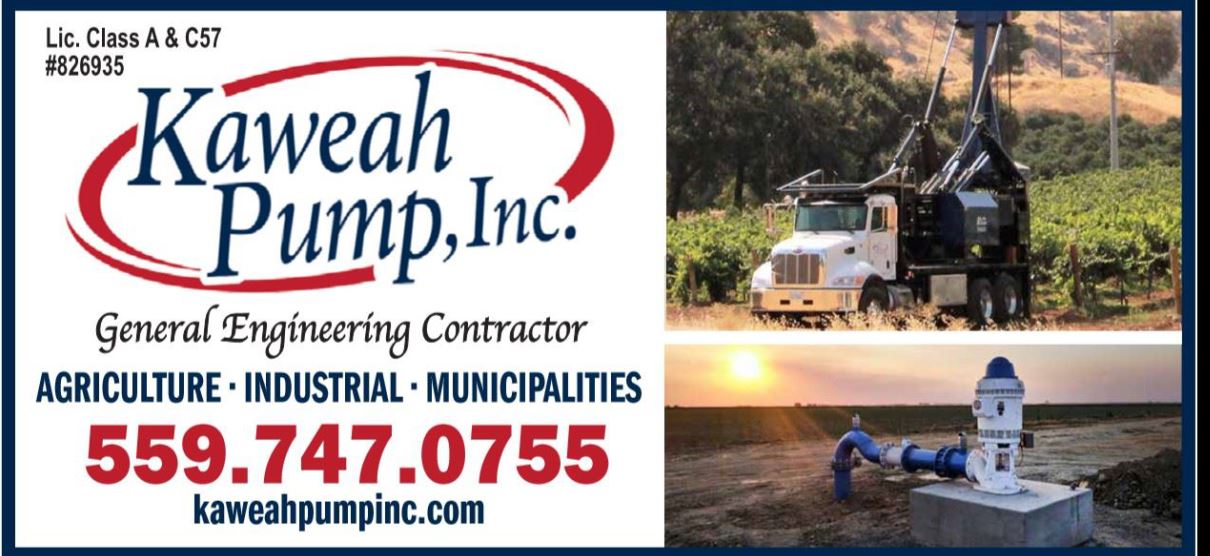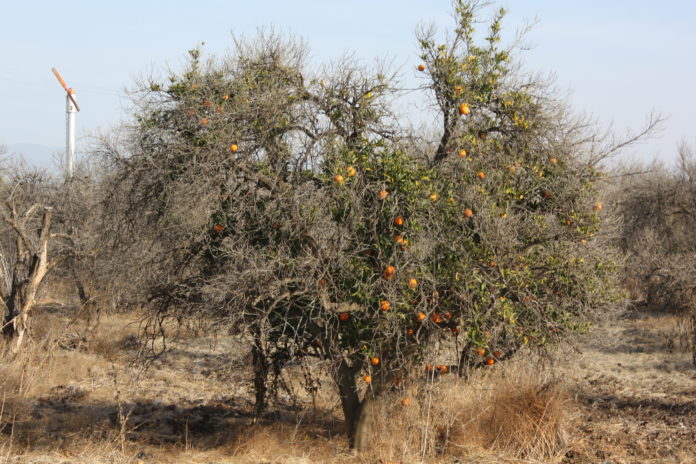The San Joaquin Valley Water Blueprint is beginning to coalesce and it’s important you’re aware of it. Everyone in the Valley who depends on groundwater – that’s everyone in the Valley – recognized something needed to change. For a myriad of reasons the aquifer in many parts of the Valley is being depleted from an involuntary lack of surface water recharge that has forced increased groundwater pumping. Input and output.
Along came the Sustainable Groundwater Management Act of 2014. SGMA started a process resulting in the formation of Groundwater Sustainability Agencies in 2017. The next phase is about to be completed as these GSAs have until January 31st to submit a Groundwater Sustainability Plan to the Department of Water Resources. DWR has two years to approved or reject the GSP.
In the meantime the people who work in water daily are taking action. The urgency to address the overdraft situation can’t be over emphasized. In April 2019 Governor Gavin Newsom called for a California Water Resilience Portfolio to put forth recommendations for each part of the state to meet its water needs. There are four goals listed: 1 – Maintain and diversify water supplies. 2 – Protect and enhance natural ecosystems. 3 – Build connections. The aim here is to improve infrastructure and increase water management flexibility. 4 – Be prepared. Each region is tasked with preparing for the upcoming stressors impacting water.
The media often portray water usage in California as a fight between the farms and the fish. This is simplistic in the extreme, mostly untrue and benefits certain special interest groups. Not all farming companies are angels and not all enviros are devils and not all media are useful stooges. But there are greedy corporate environmentalists as surely as there are growers who go beyond regulations and practice serious ecological and habitat conservation. So, before we go any further be sure you understand what the San Joaquin Valley Water Blueprint is not – it is not a way to undermine SGMA. You’re liable to hear this claim but know the truth; it will set you free.
The Water Blueprint is a response to achieving the Resilience Portfolio’s goals for the eight counties that make up the San Joaquin Valley. It was first conceived and brought together primarily by agricultural interests. But it is much more and now  include involvement by some of the targeted allies such as Fresno State and municipalities. The folks developing the Water Blueprint recognized immediately to have any hope of legitimacy and acceptance in Sacramento and the variety of communities in the Valley it couldn’t be an ag-centric effort. Disadvantaged Communities, Non-Governmental Organizations including legal and environmental groups, the business community, academia and local governments are all invited to the table. The Blueprint needs input and support from all facets of the Valley’s population. Everyone depends one way or another on groundwater and that includes the regional economy.
include involvement by some of the targeted allies such as Fresno State and municipalities. The folks developing the Water Blueprint recognized immediately to have any hope of legitimacy and acceptance in Sacramento and the variety of communities in the Valley it couldn’t be an ag-centric effort. Disadvantaged Communities, Non-Governmental Organizations including legal and environmental groups, the business community, academia and local governments are all invited to the table. The Blueprint needs input and support from all facets of the Valley’s population. Everyone depends one way or another on groundwater and that includes the regional economy.
In February 2019 the Public Policy Institute of California released as study titled, “Water and the Future of the San Joaquin Valley.” https://www.ppic.org/wp-content/uploads/water-and-the-future-of-the-san-joaquin-valley-overview.pdf Some of you may recall PPIC’s Ellen Hanak giving presentations based on this report up and down the Valley. Some of the facts presented include: The Valley’s population is four million and expected to increase by 1.4 million by 2040. Its Gross Domestic Product was $160 billion per year as of 2015. More than half of the entire state’s ag production takes place in the Valley. The Valley uses an annual net average of 16.7 million a/f and overdrafts an annual average of 1.8 million a/f. Of the 17.2 million acres in the Valley five million are used for irrigated agriculture. If nothing is done SGMA will truly be a game changer and not for the better; at least not for the part of the Valley above ground.
The Water Blueprint committee wanted to see what SGMA’s impact on the Valley will be. Dr. David Sunding, UC Berkeley was commissioned to conduct an economic analysis of reductions of groundwater use. His preliminary findings are chilling. Using the PPIC report for a foundation Sunding’s not yet finalized draft report estimates a million acres of irrigated farmland will have to be permanently fallowed. That’s a fifth of the land in use now. Retiring that land could result in a loss of $7.2 billion per year and 42,000 direct ag related job losses. He writes the total labor force in the Valley is almost two million and when indirect job losses are calculated the total loss is more like 100,000 jobs. That’s five percent of the workforce and with relatively good times the current unemployment at six percent. The total with SGMA induced job loss could be 11 or 12 percent.
Surface water could also be lost. Sunding cites four potential scenarios based on current circumstances:
- Full implementation of San Joaquin River Restoration Plan,
- Remand of 2019 BiOp and return to 2008/09 BiOps for Delta exports,
- Climate-induced sea level rise, and
- Rejection of Voluntary Agreements and implementation of State Board staff recommendations for Phases 1 and 2 assuming 45% Sacramento River Basin and Delta outflow unimpaired flow requirement and 40% unimpaired flow for San Joaquin River tributaries.
The preliminary estimate is 838,000 a/f loss of surface supplies for the Valley annually on top of SGMA restricted groundwater use. Of the four above two are already underway: the San Joaquin River Restoration has been ongoing for years and state has accepted detrimental climate change as a given. In any case all of the scenarios are subject to government policy decisions.
There was a meeting at the Capitol on January 23rd with representatives from the Blueprint committee and four members of the Governor’s cabinet, nine state legislators, two members of Congress, the Governor’s chief of staff and assistant chief of staff. The politicos were updated on the San Joaquin Valley Water Blueprint and Sunding’s draft report. The meeting was characterized as positive not because of findings in Dr. Sunding’s report but because the Blueprint also includes some plans for mitigating the harsher fallout to the Valley’s water/economic woes. Those in attendance were said to have welcomed the Blueprint. That’s nice. That’s good. But much more needs to be accomplished.
Sunding’s report and some positive scenarios will soon be unveiled as the Water Blueprint is released. Keep your eyes and ears open. Be prepared to familiarize yourselves with the content and give reason for the need to implement the plans. It’s easier to identify a problem and much more work to solve it.
We have to speak as one voice in the Valley. I’ve been told there are 400 million people living in the United States and 40 million of them live in California. Of that 40 million 19 out of 20 live within 60 miles of the beach in the Bay Area and Southern California. So, 95 percent of the people living in California will not experience an immediate direct impact from SGMA. They’ll end up paying more for food and the Valley’s environment and wildlife habitat could suffer since the Pacific Flyway depends on water transfers, if that matters to them. But the five percent of folks directly impacted include some of the poorest and most vulnerable in the state. Who will speak for them?
The San Joaquin Valley Water Blueprint will soon have a website and suggestions for what you can do to be part of the solution. Stay tuned, I intend to stay on this topic like a dog on a bone.
DISCLAIMER OF RESPONSIBILITY; Waterwrights strives to provide clients with the most complete, up-to-date, and accurate information available. Nevertheless, Waterwrights does not serve as a guarantor of the accuracy or completeness of the information provided, and specifically disclaims any and all responsibility for information that is not accurate, up-to-date, or complete. Waterwrights’ clients therefore rely on the accuracy, completeness and timeliness of information entirely at their own risk. The opinions expressed in this report are those of the author and do not represent any advertisers or third parties.
ALL RIGHTS RESERVED. Copyright 2020 by Don A. Wright/www.WaterWrights.net
SAN Joaquin Valley Water Blueprint is an inclusive and collaborative effort by all San Joaquin Valley residents regardless of interests to come together with one voice to prevent a water based economic meltdown while preserving and improving our communities and habitat.
































